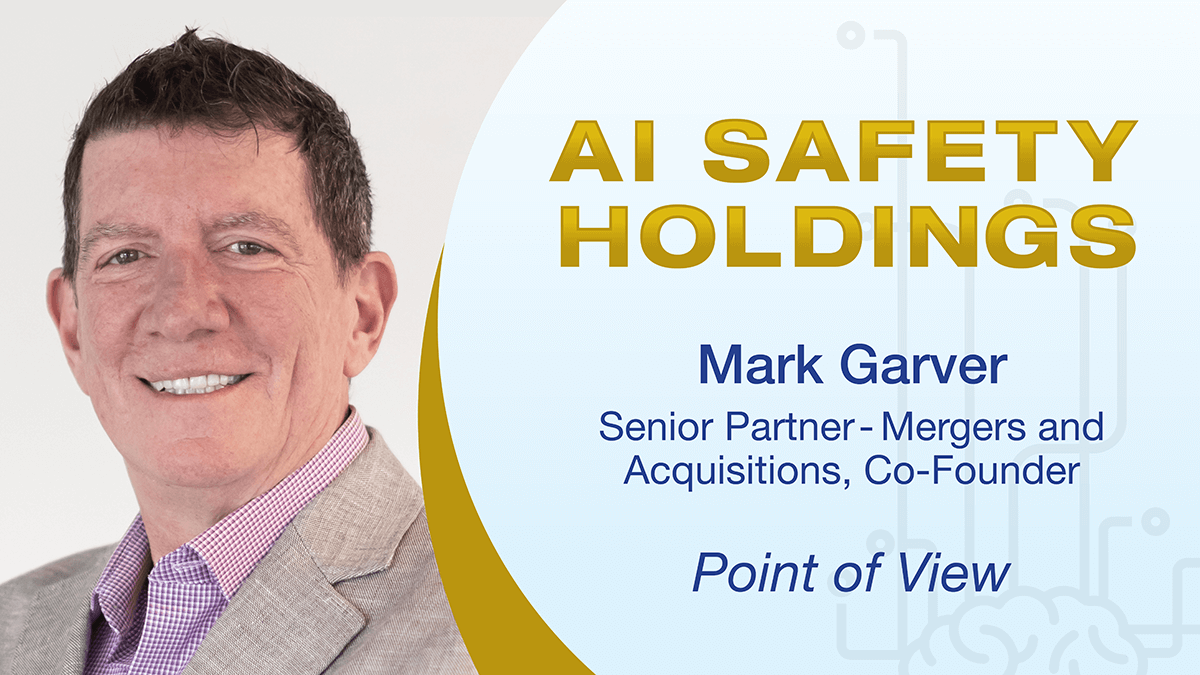by Mark Garver, July 19, 2022
AI Safety Holdings has a primary focus on technology and solutions that empower the patient and at the same time solve much of the administrative issues that exist with healthcare providers. Our Founder and CEO has a vision, to revolutionize healthcare, to be a trusted family friend who takes care of you and your loved ones, saving and improving your life, and having an impact for everyone on the planet.
To truly fulfill this vision, we look at how we can invest in technologies that a) put the patient first, b) make the patients feel as an active participant in the care journey and c) help healthcare providers spend more time on patient care instead of administrative tasks.
Research shows that when patients are able to see their own health data, they gain ownership of their own wellness and are better prepared to interact with their providers about their care. Patient-provider communication through secure messaging is an important component of the patient portal. Secure messaging capabilities offer just as many benefits to the provider as they do the patient, allowing the provider to build a relationship with their patients while streamlining their workload.
To build this relationship with a patient there are several critical features that are required:
- Connect with a doctor, nurse or better an Artificial Intelligence agent to discuss your symptoms and determine what care you need. Many calls to healthcare providers can be remedied at home without the need for prescription drugs. This connection helps to put the patient and their family in control and makes them comfortable. The AI Agent needs to feel empathetic, compassionate and understanding of what the patient is going through.
- If care is required the system should be able to a) find the best and most convenient care provider, b) the best price and c) a provider that the patients insurance company covers.
- Once a provider is recommended and accepted by the patient, the system then should perform two simple yet important tasks, a) appointment scheduling and b) pre-authorization for the visit and procedure.
By using Artificial Intelligence to automate and optimize these, not only does the patient benefit, but so does the healthcare provider by being less reliant on people to handle all of these processes which can also greatly reduce human error.
Now that a relationship has been built the patient in these early interactions, we need to build an ongoing and trusted relationship. We do this through patient communication and giving the patient access to their medical records, appointments, conversations, etc. We must do it in a non-technical way. Have you ever been to the doctor and they tell you based on your symptoms what you have, or received your written visit summary only to have to go online to determine what you have? Yes, the provider answers your questions during your visit, but so many people can’t remember soon after they leave the office.
This is where a tool on a mobile device or portal is critical, showing the patient everything, they need to know including non-technical or medical language about:
- Symptoms that lead to the diagnosis
- What the condition is and what likely caused it
- X-Ray, MRI or other images taken during the patients visit (Some ask why this feature is required since the patient likely won’t understand it. It is critical for the patient to have this so if they have to go out of their provider network, let’s say on vacation and have to seek care, they have ALL of their records.
- Treatment details and additional recommendations
- Lastly, the ability to connect through this technology to ask additional questions or simply connect for support, just like calling back to the doctor’s office to ask questions, just open the application or portal and connect with your own personal medical assistant, that already knows you
Patient data and the control of that information is critical, and the ability to securely and easily share it is crucial. Having the ability to give various levels of access to care givers and even family members is important to patients. In the US when you first go the doctor’s office they have you fill out a number of forms, including one asking who they can talk to by phone or email about your medical conditions. This shows an existing reliance on manual and people- oriented communications.
Here is an example of the problems for both family members and healthcare providers such as nurses:
Patient is hospitalized for COVID, and due to CDC restrictions isn’t allowed visitors. The nurse on that floor of treatment try their best to keep up with updates to the family, or at least the designated family member. Of course, it is never soon enough or detailed enough for the family, so they call the nurse for updates frequently, more than daily. In most every family there is one or more that will think they should have more information, or that the last family member didn’t ask the right questions. Before you know it the nurse’s station is fielding calls from five family members that all think their dad for instance is the ONLY patient the nurse has to take care of. This is based on a true story.
By using the same type of technology that empowered the patient and their family via access to up-to-date data, what if we solved this dilemma through a platform that provided all of the benefits already discussed.
Imagine the scenario I just shared, but we interject AI Safety Holdings strategy to solve multiple problems that were illustrated.
When the nurses check on a patient they update an electronic chart, which instantly is uploaded to the secure patient data platform. All family members with access to the mobile application or portal that we have discussed have instant access to the latest information. Some family member will likely still have questions, but instead of a phone call to the nurse, they are able to ask questions through the mobile application or portal, likely interacting with an Artificial Intelligent (AI) Specialist agent that can answer any questions they may have.
This allows the family to feel updated and part of the process and it also takes a tremendous burden off the nursing staff allowing them to spend more time on patient care than on updating the family.
We don’t stop there, because part of putting the patient first requires us to address more issues within the healthcare network to reduce burnout and fatigue of healthcare professionals. This is where we focus on healthcare process automation, technical it’s called Robotic Process Automation (RPA), but these are software robots, not the ones envisioned by Isaac Asimov.
Process automation has existed in healthcare for years; however, medical professionals will tell you in most cases it increased their administrative tasks as opposed to reducing them. The reason is many companies that specialize in this simply automate bad workflows and operational methodologies. Rarely are the healthcare professionals consulted about this. We believe in engaging medical professional to optimize their workflow and processes BEFORE it is automated, and these are the types of companies AISH looks to invest in.
Summary:
- Put the patient first
- Optimize the Patient Care Journey
- Involve the family
- Address Healthcare Professional Burnout
- Lower healthcare provider costs
- Optimization BEFORE automation
- Reduce time a patient spends on the healthcare journey
- Prevent Human Error
- Provide 90% increase in efficiency






